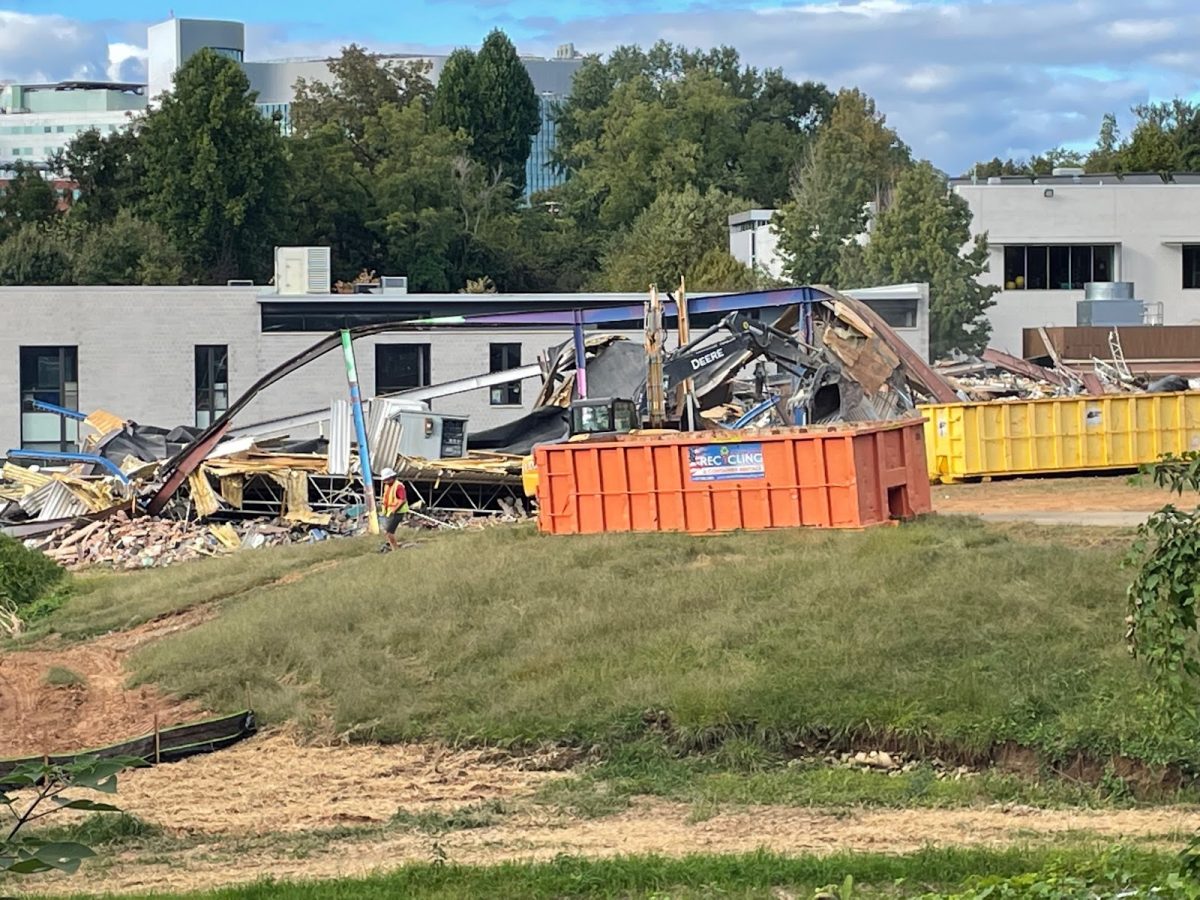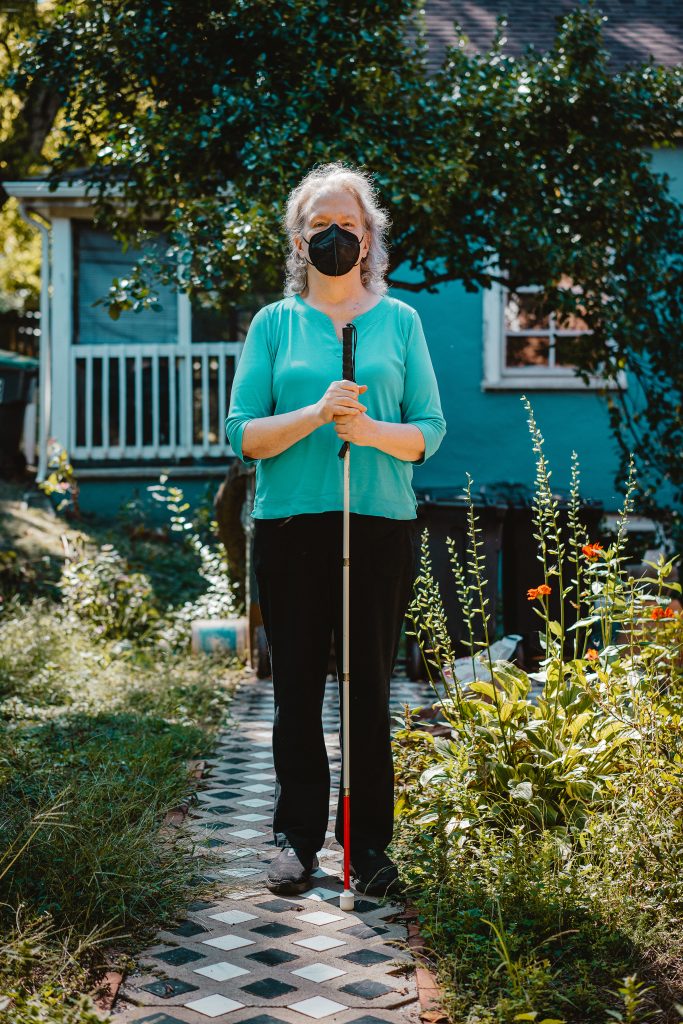Tents popped up in Market Street Park last week after City Manager Sam Sanders lifted an 11pm curfew, a move he made in response to allegations of police misconduct and discrimination against the city’s unhoused Black population. At a September 28 press conference, Charlottesville Police Chief Michael Kochis said the allegations were not accurate, and the police department’s investigation had been resolved.
Prior to Sanders lifting the curfew, officers were often called to speak with people setting up tents and staying in the park after hours. It was during these calls that it was alleged that officers were instructing only unhoused people of color to leave the park, and that a Black unhoused man was kicked by police.
“One of the officers kicked the young man who was sitting here, his name was Key Marcus,” said Deidre Gilmore at the September 18 City Council meeting. “He was trying to wake him up, but instead of gently touching or just maybe using a nightstick, he decided to kick him.”
Gilmore’s concerns were echoed by other advocates during public comment at the council meeting. Though no formal complaints were filed against the CPD, Kochis consulted with the commonwealth’s attorney and opened an administrative investigation into the interactions.
“The City of Charlottesville takes these allegations seriously, and Chief Kochis and I will remain focused on maintaining positive interactions with all of our officers,” said Sanders on September 21, when he announced that the park would be open 24/7. “I want the city to be a catalyst for change in addressing housing insecurity and homelessness, which is why I am assembling my team to build a long-term strategy.”
The investigation lasted a week, after which the department released body camera footage of two specific incidents.
The first video shows the September 12 arrest of Roscoe Boxley, an unhoused Black man who was staying in the park. When told by officers he would need to leave before 11pm, Boxley set up a chair on the walkway to protest, and said he would not leave unless arrested.
“After 11pm, when the park closed, the officer advised [Boxley] that he could avoid being arrested if he would just leave the park like everyone else was,” says Kochis. “The individual refused to leave the park at that time. He was arrested without incident.”
In addition to trespassing, Boxley was served with a felony warrant for probation violation.
“As soon as I was awakened, I made up my mind at that point that I was going to protest,” says Boxley. “I had already made a sign.”
Footage from September 16 shows officers waking up people sleeping in the park and telling them to leave. Kochis says the officers noticed that a man they had just spoken to had gone back to sleep. “Officers attempted to wake him up again, but received no response. At this point, one of the officers touched the heel of the person’s foot with his own foot to wake him up. He woke up, he eventually packed his stuff, and left the park.”

After a review of the investigation, Kochis concluded that allegations of police violence and discrimination against unhoused people at the park were “unfounded and simply did not occur.”
“Responding to calls involving the unhoused are complex and multifaceted,” says Kochis. “As such, I have ordered the review of our training protocols as they relate to the handling of calls for service involving the unhoused.”
Despite the investigation’s findings, some remain disappointed in the police response. “No matter what the police do, they never find anything wrong,” says Gilmore. “I know what a kick is. You could have touched him with your nightstick. You don’t put your feet on your dog.”
“When we spoke at City Council … I was just going by what I heard,” says Darryl Jones. “He did get kicked from what I saw in that video. And that’s what I didn’t like, where they tried to dress it up and say he lightly tapped him. I don’t care, you shouldn’t have put your foot down there.”
Boxley no longer lives in the park, as part of a court order, but he says the unhoused people pitching tents in the park are only a “symptom” of a larger problem.
“We don’t want to be in the park. It just so happened to be the space of safety,” Boxley says. “Nobody wants to see a bunch of racist people taking pictures because they miss that statue. We don’t want to be nobody’s circus act. This is not a village, this is some people hav[ing] a hard time trying to get attention. They[’re] trying to get some help.”
The city has recently received numerous messages about the conditions in Market Street Park, resources for the unhoused, and safety concerns. And after a CPD request for information following a stabbing in the park, city councilors and Sanders have received hundreds of emails calling for the reinstatement of the park’s curfew or immediate action on the homelessness crisis.
Reverend Alex Joyner, pastor at First United Methodist Church, has witnessed the expanding homelessness crisis firsthand. While he knows there is no simple solution, he is optimistic about expanding resources to meet the growing need. “It’s such a complex problem that involves affordable housing and involves mental health and involves access to services,” he says. “Enforcing the curfew might move the problem, but it doesn’t come to the ultimate solution.”
Sanders explained his decision to open Market Street Park at the October 2 City Council meeting. “I do not do knee-jerk reactions. I strive to solve problems, not just identify them and talk about them at the surface,” he said. “I did not decide to lift the closing hours of Market Street Park under duress or without regard for our police department.”
Sanders, who acknowledges the complexity of helping Charlottesville’s unhoused population, outlined the current state of an action plan, including immediate items of determining logistics for expanding overnight shelter availability. “We are in conversation with PACEM [People and Congregations Engaged in Ministry] to see if it’s possible to open the shelter early,” he said.
The city seems to be taking action to help the unhoused population, but the situation and police response to calls involving homeless individuals remains complex. “When we are called, it’s typically because multiple systems have failed these communities,” says Kochis. “We’re not always best suited to deal with those, but we have to answer the call.”
For now, Market Street Park remains open around the clock.















